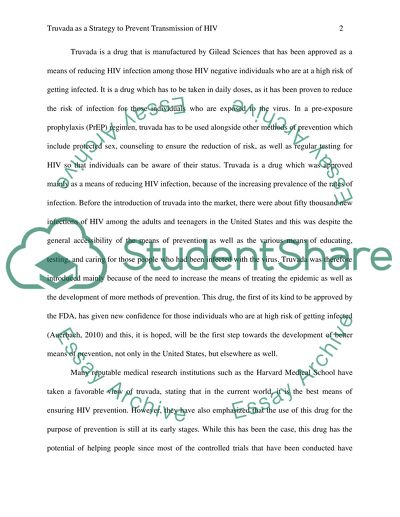Cite this document
(“Treatment as Prevention: Develop a position on the use of Truvada as a Essay”, n.d.)
Treatment as Prevention: Develop a position on the use of Truvada as a Essay. Retrieved from https://studentshare.org/gender-sexual-studies/1628361-treatment-as-prevention-develop-a-position-on-the-use-of-truvada-as-a-strategy-to-prevent-transmission-of-hiv
Treatment as Prevention: Develop a position on the use of Truvada as a Essay. Retrieved from https://studentshare.org/gender-sexual-studies/1628361-treatment-as-prevention-develop-a-position-on-the-use-of-truvada-as-a-strategy-to-prevent-transmission-of-hiv
(Treatment As Prevention: Develop a Position on the Use of Truvada As a Essay)
Treatment As Prevention: Develop a Position on the Use of Truvada As a Essay. https://studentshare.org/gender-sexual-studies/1628361-treatment-as-prevention-develop-a-position-on-the-use-of-truvada-as-a-strategy-to-prevent-transmission-of-hiv.
Treatment As Prevention: Develop a Position on the Use of Truvada As a Essay. https://studentshare.org/gender-sexual-studies/1628361-treatment-as-prevention-develop-a-position-on-the-use-of-truvada-as-a-strategy-to-prevent-transmission-of-hiv.
“Treatment As Prevention: Develop a Position on the Use of Truvada As a Essay”, n.d. https://studentshare.org/gender-sexual-studies/1628361-treatment-as-prevention-develop-a-position-on-the-use-of-truvada-as-a-strategy-to-prevent-transmission-of-hiv.


